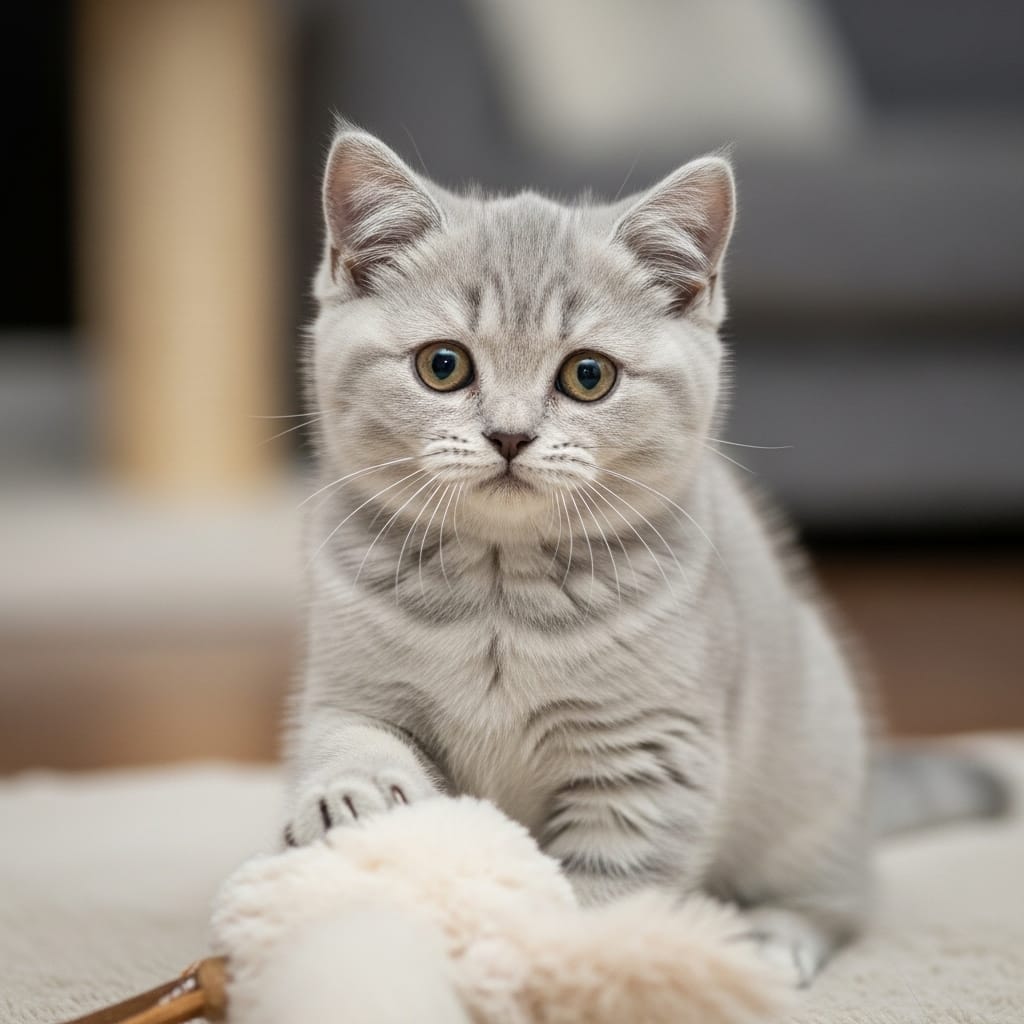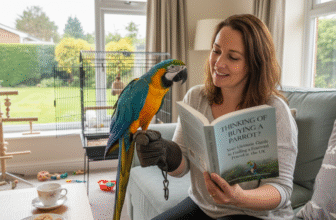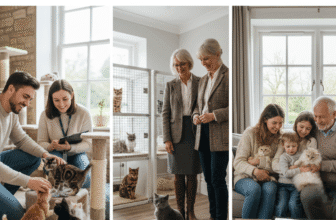
British Shorthair Kittens for Sale: The Ultimate UK Guide to Finding Your Teddy Bear Cat
There’s something undeniably captivating about the British Shorthair. With their plush, dense coats, round chubby-cheeked faces, and large, expressive eyes, they look like living, breathing teddy bears. It’s no wonder they’ve become one of the most beloved and sought-after pedigreed cat breeds in the United Kingdom. Their calm, affectionate, and quietly devoted nature only adds to their immense appeal. If you’ve found yourself charmed by this gentle giant of the feline world and are considering searching for a “British Shorthair for sale,” you’re embarking on a wonderfully rewarding journey. However, it’s a journey that requires careful thought, thorough research, and a commitment to responsible ownership. This comprehensive guide is here to walk you through every step of the process, ensuring the kitten you bring home is happy, healthy, and a perfect new addition to your family.
The Enduring Allure of the British Shorthair: More Than Just a Pretty Face
To truly appreciate the British Shorthair, it helps to understand their rich heritage and the temperament that has won them so many fans. They aren’t a modern, man-made breed; they are a cat with deep, historical roots in the British Isles.
A Rich History: From Roman Mousers to National Treasures

The story of the British Shorthair begins, it’s widely believed, with the Romans. When they invaded Britain, they brought with them domestic cats to protect their food supplies from rodents. These were sturdy, hardworking felines, built for the rigours of a working life. Over centuries, these cats roamed the British countryside and towns, interbreeding with native wildcats and adapting perfectly to the climate. The result was a cat with a dense, waterproof coat and a robust, powerful build.
In the late 19th century, a cat enthusiast named Harrison Weir, often called “the father of the cat fancy,” decided that this common street cat deserved recognition. He began a programme of selective breeding to standardise their appearance and temperament, focusing on the best examples of the breed. It was Harrison Weir who organised the very first formal cat show at the Crystal Palace in London in 1871, where a 14-year-old female British Shorthair blue tabby won ‘Best in Show’. This event catapulted the breed into the public consciousness, and they have remained a national treasure ever since. Though their numbers dwindled during the World Wars, dedicated breeders worked tirelessly to preserve them, and today they stand as a proud and popular symbol of British heritage.
The Teddy Bear Temperament: What to Expect From Your Shorthair Companion
While their cuddly appearance is what first draws people in, it’s their personality that truly seals the deal. The British Shorthair is the epitome of a gentle giant. They are placid, easy-going, and remarkably patient, making them an excellent choice for families with children who have been taught how to interact respectfully with animals.
They are affectionate but not demanding. A British Shorthair will happily follow you from room to room, content just to be in your presence. They enjoy a good cuddle on the sofa but are not typically lap cats in the sense of needing to be on you constantly. They prefer to sit beside you, offering a quiet, comforting presence. This independent streak also means they tolerate being left alone better than many other breeds, making them suitable for individuals or couples who work during the day. They are intelligent but not overly mischievous. You’re more likely to find your British Shorthair snoozing in a sunbeam than climbing your curtains. They have a quiet voice and tend to communicate with soft chirps and purrs rather than loud meows.
They generally get along well with other pets, including dogs, provided they are introduced carefully and respectfully. Their laid-back nature means they are less likely to be flustered by a friendly canine companion. In essence, they bring a sense of calm and stability to any household they join.
The Search Begins: Finding a British Shorthair for Sale in the UK
Once you’ve decided this is the breed for you, the most crucial phase begins: finding a kitten. This is not a process to be rushed. The health, temperament, and overall well-being of your future companion depend entirely on the quality of the breeder you choose. The internet is flooded with listings, but it’s vital to know how to distinguish an ethical, responsible breeder from a backyard breeder or a kitten farm.
The Gold Standard: Identifying a Reputable Breeder
A reputable breeder is a custodian of the breed. Their primary motivation is the love of British Shorthairs and the desire to produce healthy, well-socialised examples that adhere to the breed standard. Here’s what to look for:
- Registered with a Governing Body: In the UK, the main registry is the Governing Council of the Cat Fancy (GCCF). A good breeder will have their cattery prefix registered with the GCCF, and all their kittens will be registered. This means they abide by a strict code of ethics regarding cat welfare and breeding practices.
- Health Testing is Non-Negotiable: British Shorthairs can be prone to certain genetic conditions, primarily Hypertrophic Cardiomyopathy (HCM – a heart condition) and Polycystic Kidney Disease (PKD). A responsible breeder will have their breeding cats (the parents) genetically tested for PKD and regularly screened for HCM by a veterinary cardiologist. They should be happy and proud to show you the certificates for both parents. Do not accept excuses; this is crucial for your kitten’s long-term health.
- They Interview You: A good breeder cares deeply about where their kittens go. Expect them to ask you lots of questions about your home, your lifestyle, your family, and your experience with pets. They are not being nosy; they are ensuring their precious kitten is going to a suitable, loving, forever home. Be wary of any breeder whose only question is about how you will pay.
- Home-Reared Kittens: The best kittens are raised underfoot in the family home. This ensures they are well-socialised from a young age, accustomed to the everyday sights and sounds of a household, and used to being handled by people. Kittens raised in outdoor pens or cages can often be fearful and poorly socialised.
- You Can Meet the Mother Cat: You should always be able to see the kittens with their mother. Observe her temperament – is she friendly, confident, and healthy? Her personality is a good indicator of how her kittens might turn out. The father cat may not always be present as breeders often use stud cats from other catteries, but you should be able to see his health records and pedigree.
- Kittens Are Ready at 13 Weeks (or older): A responsible breeder will not let a kitten go to its new home before it is at least 13 weeks old. This time is vital for learning social skills from their mother and siblings. By this age, they will also have completed their primary course of vaccinations and have been wormed and flea-treated.
- Provides a Comprehensive Kitten Pack: When you collect your kitten, you should receive a pack containing their GCCF registration card (often marked ‘non-active’ to prevent breeding), a four or five-generation pedigree certificate, their vaccination record, microchip details, and often a small supply of their current food and some familiar-smelling toys or a blanket.
Warning Signs: How to Avoid Unethical Sellers
Conversely, there are several red flags that should send you running in the opposite direction:
- Offering kittens for sale under 12 weeks old.
- Not being able to show you the mother cat.
- Breeding multiple different popular breeds of cats or dogs.
- Not having any health test results for the parent cats.
- Pressuring you into making a quick decision or offering a ‘special discount’.
- Wanting to meet you in a car park or public place to hand over the kitten.
- The kittens appear dirty, lethargic, or fearful.
- The breeder cannot answer detailed questions about the breed.
Understanding the Cost: What’s the Price of a British Shorthair?
A well-bred, pedigreed kitten is an investment. While prices can vary, it’s important to understand what you are paying for when you buy from a reputable source.
The Initial Investment: Kitten Prices Explained
In the UK, you can expect the price for a pet-quality, GCCF-registered British Shorthair kitten to range from approximately £800 to £1500, and sometimes more. Several factors influence this price:
- Pedigree and Bloodlines: Kittens from champion or grand champion bloodlines will command a higher price.
- Colour: While the classic British Blue is the most iconic, rarer colours and patterns, such as cinnamon, fawn, or certain colourpoints, can be more expensive due to their scarcity.
- Breeder’s Reputation: Established breeders who consistently produce healthy, well-tempered cats and have invested heavily in health screening and high-quality care will naturally charge more.
This price isn’t just for the kitten itself. It covers the breeder’s significant expenses, including stud fees, health screening for the parents, high-quality food for the mother and kittens, vet checks, vaccinations, microchipping, GCCF registration, and countless hours of care and socialisation.
Beyond the Purchase Price: The Ongoing Costs of Ownership
The initial purchase price is just the beginning. Responsible cat ownership involves ongoing financial commitment. Before you buy, you must budget for:
- High-Quality Food: £30 – £50 per month.
- Pet Insurance: Essential for unexpected vet bills. This can range from £15 – £30 per month.
- Annual Vet Check-ups and Boosters: Approximately £60 – £100 per year.
- Regular Flea and Worming Treatment: Around £10 – £15 per month.
- Litter: £10 – £20 per month.
- Initial Setup Costs: Litter trays, food bowls, water fountain, scratching posts, beds, toys, and cat carriers. This can easily be £150 – £250+.
- Neutering/Spaying: Your kitten will come with a contract stating you must have them neutered/spayed. This typically costs between £80 and £200.
Health and Wellbeing: A Lifelong Commitment
British Shorthairs are generally a robust and healthy breed with a lifespan of 14-20 years. However, like all pedigreed breeds, they have some predispositions you should be aware of.
Common Health Considerations
As mentioned, the two most significant concerns are HCM and PKD. Responsible breeding has dramatically reduced the incidence of PKD, as a simple DNA test can identify carrier cats, who should then be removed from breeding programmes. HCM is more complex as there is no single gene test. Responsible breeders screen their breeding cats regularly via echocardiograms performed by veterinary cardiologists to ensure they are breeding from heart-healthy lines. Always insist on seeing proof of these tests.
Caring for That Plush Coat: Grooming Essentials
That beautiful, dense coat is surprisingly low-maintenance. A good brush once or twice a week is usually sufficient to remove loose hair and prevent mats from forming. During seasonal sheds in spring and autumn, you may need to increase this to a few times a week. Regular grooming is also a wonderful way to bond with your cat and check for any lumps, bumps, or parasites.
Preparing Your Home for a British Shorthair Kitten
Bringing a new kitten home is incredibly exciting. To make the transition as smooth as possible, prepare in advance. You’ll need:
- A comfortable and secure cat carrier for the journey home.
- Food and water bowls (ceramic or stainless steel are best).
- The same food the breeder was using to avoid tummy upsets.
- A litter tray and litter (again, start with the type the kitten is used to).
- A sturdy scratching post to save your furniture.
- A cosy bed, although your kitten will likely choose their own sleeping spots!
- A selection of safe toys to keep them entertained.
Set up a ‘safe room’ for their first few days. This should be a quiet room with their food, water, litter tray, and bed, where they can acclimatise to their new surroundings without being overwhelmed. Let them explore the rest of the house at their own pace. By taking things slow and providing a loving, secure environment, you’ll help your new British Shorthair kitten blossom into the confident, affectionate companion they are destined to be. Choosing to bring one of these wonderful cats into your life is a significant decision, but by prioritising responsible breeders and ethical practices, you are setting the stage for many years of quiet devotion and teddy-bear cuddles.







